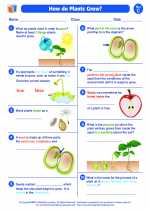Bases in Science
In science, bases are a class of substances that have specific properties and characteristics. Bases are commonly defined as substances that can accept protons or donate electron pairs. They are the opposite of acids and can neutralize acids. Bases have a slippery feel and can be found in various natural and man-made substances.
Properties of Bases
Some key properties of bases include:
- Bitter Taste: Many bases have a bitter taste.
- Slippery Texture: Bases can feel slippery or soapy to the touch.
- Ability to Neutralize Acids: Bases can neutralize acids to form salts and water.
- Conductivity: When dissolved in water, bases can conduct electricity.
- pH Level: Bases have a pH level higher than 7 on the pH scale.
Examples of Bases
Common examples of bases include:
- Sodium Hydroxide (NaOH): Found in cleaning agents and drain cleaners.
- Ammonia (NH3): Often used in household cleaners and fertilizers.
- Magnesium Hydroxide (Mg(OH)2): Found in antacids and laxatives.
- Calcium Hydroxide (Ca(OH)2): Also known as slaked lime, used in construction and agriculture.
Uses of Bases
Bases have a wide range of uses in various industries and everyday life. Some common uses include:
- Household Cleaning: Bases are used in various household cleaning products to remove dirt and grease.
- Medicine: Some bases are used in medications such as antacids to neutralize stomach acid.
- Manufacturing: Bases are used in the production of soaps, paper, and textiles.
- Agriculture: Bases like lime are used to adjust soil pH and improve crop growth.
Study Guide
Here are some key points to remember about bases for your study guide:
- Definition of bases and their properties.
- Examples of common bases and their uses.
- How bases can neutralize acids and their effects on pH levels.
- Importance of bases in various industries and everyday life.
Understanding the properties and uses of bases is essential for learning about chemical reactions and the behavior of substances in the natural world.
.◂Science Worksheets and Study Guides Third Grade. How do plants grow?
Study Guide How do plants grow?
How do plants grow?  Activity Lesson
Activity Lesson How Do Plants Grow?
How Do Plants Grow?  Worksheet/Answer key
Worksheet/Answer key How do plants grow?
How do plants grow?  Worksheet/Answer key
Worksheet/Answer key How do plants grow?
How do plants grow?  Worksheet/Answer key
Worksheet/Answer key How do plants grow?
How do plants grow?  Worksheet/Answer key
Worksheet/Answer key How do plants grow?
How do plants grow?  Vocabulary/Answer key
Vocabulary/Answer key How do plants grow?
How do plants grow?  Vocabulary/Answer key
Vocabulary/Answer key How do plants grow?
How do plants grow? 

 Activity Lesson
Activity Lesson
 Worksheet/Answer key
Worksheet/Answer key
 Worksheet/Answer key
Worksheet/Answer key
 Worksheet/Answer key
Worksheet/Answer key
 Worksheet/Answer key
Worksheet/Answer key
 Vocabulary/Answer key
Vocabulary/Answer key
 Vocabulary/Answer key
Vocabulary/Answer key

The resources above cover the following skills:
LIFE SCIENCE (NGSS)
From Molecules to Organisms: Structures and Processes
Students who demonstrate understanding can:
Develop models to describe that organisms have unique and diverse life cycles but all have in common birth, growth, reproduction, and death.